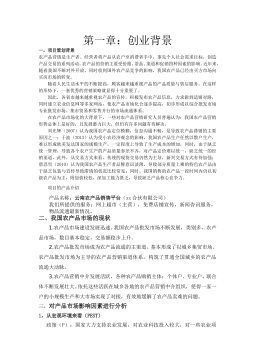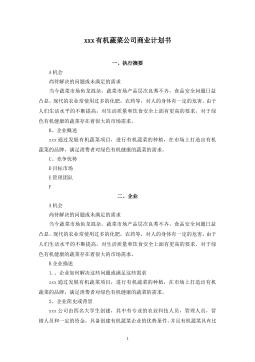我国商业银行效率及其影响因素实证研究-基于DEA和因子分析法对比
摘要目前我国正处于经济转轨时期,作为国民经济的命脉的金融业一直是现代经济的核心,而作为金融体系主体—商业银行的地位与功能也愈加重要。在吸取国内外的诸如2008年国际金融危机、欧洲债务危机等经验与教训的同时,伴随着银行业改革步伐的加快和竞争的日益激烈,作为集中体现银行竞争力的商业银行的效率问题又再次成为人们研究和关注的焦点。因此本文选择以我国商业银行的效率问题为研究对象,力图分析银行效率的现状、影响效率的各种因素,并说明商业银行效率提高的途径,既具有重大的理论价值又具有重要的现实意义。本文在综合简介了国内外相关文献后,概述了银行效率的基本含义,以及银行效率研究中的财务分析法和前沿分析法,进行对比...
相关推荐
-
人教PEP英语-((开学摸底测试 综合提升卷)2023-2024学年五年级英语上册开学摸底考试卷(一)(人教PEP版)VIP免费

 2024-09-30 8
2024-09-30 8 -
人教PEP英语-((开学摸底测试 重难点必刷卷)2023-2024学年四年级英语上册开学摸底考试卷(二)(人教PEP版)VIP免费

 2024-09-30 9
2024-09-30 9 -
人教PEP英语-((开学摸底测试 重难点必刷卷)2023-2024学年五年级英语上册开学摸底考试卷(二)(人教PEP版)VIP免费

 2024-09-30 7
2024-09-30 7 -
人教PEP英语-((开学摸底测试 综合提升卷)2023-2024学年四年级英语上册开学摸底考试卷(一)(人教PEP版)VIP免费

 2024-09-30 7
2024-09-30 7 -
人教PEP英语-(2023-2024学年六年级英语上册开学摸底考试卷A卷(人教PEP版)VIP免费

 2024-09-30 8
2024-09-30 8 -
人教PEP英语-(2023-2024学年六年级英语上册开学摸底考试卷B卷(人教PEP版)VIP免费

 2024-09-30 8
2024-09-30 8 -
人教PEP英语-(开学摸底测试 易错题精选卷)2023-2024学年五年级英语上册开学摸底考试卷(三)(人教PEP版)VIP免费

 2024-09-30 7
2024-09-30 7 -
外研版英语-(开学摸底测试 易错题精选卷)2023-2024学年六年级英语上册开学摸底考试卷(三)(外研版三起)VIP免费

 2024-09-30 8
2024-09-30 8 -
外研版英语-(开学摸底测试 易错题精选卷)2023-2024学年五年级英语上册开学摸底考试卷(三)(外研版三起)VIP免费

 2024-09-30 8
2024-09-30 8 -
外研版英语-(开学摸底测试 重难点必刷卷)2023-2024学年六年级英语上册开学摸底考试卷(二)(外研版三起)VIP免费

 2024-09-30 8
2024-09-30 8
相关内容
-
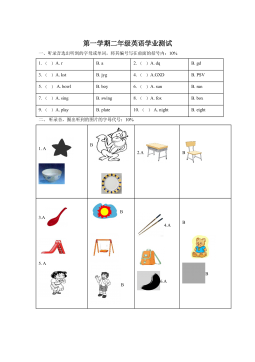
2021-2022学年牛津上海版(试用本)二年级上册期末模拟测试卷英语试卷(解析版)
分类:中小学教育资料
时间:2024-11-19
标签:无
格式:DOC
价格:5 积分
-
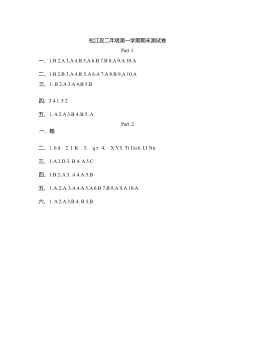
2019-2020学年2年级松江区英语上期末试卷答案
分类:中小学教育资料
时间:2024-11-19
标签:无
格式:DOCX
价格:5 积分
-
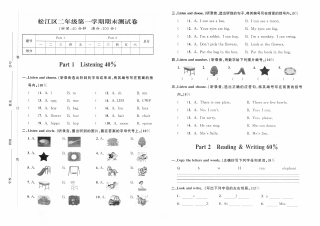
2019-2020学年2年级松江区英语上期末试卷
分类:中小学教育资料
时间:2024-11-19
标签:无
格式:PDF
价格:5 积分
-
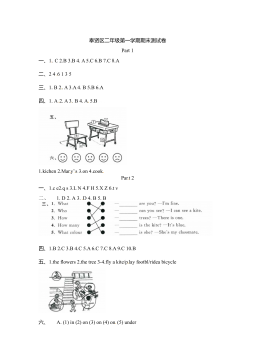
2019-2020学年2年级奉贤区英语上期末试卷答案
分类:中小学教育资料
时间:2024-11-19
标签:无
格式:DOCX
价格:5 积分
-
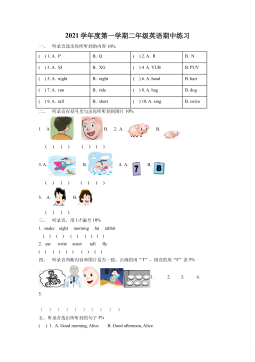
2021-2022学年牛津上海版(试用本)二年级上册期中模拟测试英语试卷(原卷版)
分类:中小学教育资料
时间:2024-11-19
标签:无
格式:DOC
价格:5 积分


